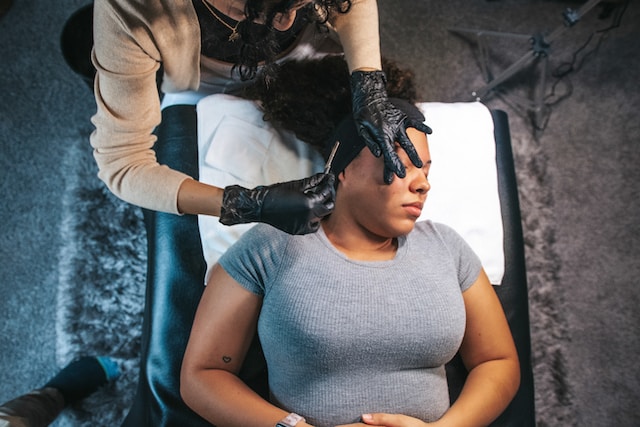
Dermaplaning is a safe treatment that can be performed on any skin type. However, following a few rules before your appointment is important to get the most out of your session.
Avoid shaving or exfoliating your face before dermaplaning. This can irritate and increase the likelihood of infection.
What is Dermaplaning?
Dermaplaning is a safe exfoliation procedure that removes the dead skin cells and fine, fuzzy (vellus) hair that contributes to dullness and pore-clogging. A dermatologist or aesthetician uses a scalpel-like tool to scrape the face lightly. It feels a bit like shaving, but it’s not painful.
It can help soften fine lines, wrinkles, hyperpigmentation, and uneven skin tone. It also helps skincare products penetrate the skin better. Plus, it preps the face for other treatments, like lasers or peels.
How Does It Work?
Dermaplaning removes dead skin cells and fine facial hairs (vellus hair). The treatment helps smooth the face, allowing serums and moisturizers to penetrate the skin better.
The procedure is also safe for pregnant and nursing women. However, it is important to let the dermatologist know if you have cold sores because the process can reactivate them. The doctor might recommend an antiviral medication to prevent outbreaks. This treatment is also great for improving the appearance of crow’s feet and other wrinkles.
What Can I Expect?
Dermaplaning Virginia Beach is more than a beauty trend; it’s a clinically proven way to exfoliate and eliminate fine facial hair. It also leaves the skin feeling soft and smooth.
The procedure involves pulling the skin taut and using a sanitized tool to scrape off the top layer of dead skin cells and the fine vellus hairs that resemble peach fuzz. Once this is done, serums and moisturizers can be applied to nourish the skin. The best part is that there is no downtime involved.
Are There Any Side Effects?
When performed by professionals, dermaplaning is a safe procedure. This procedure is safe for all skin types. However, it is not recommended for people with rosacea, active acne, sunburns, eczema or psoriasis, as the treatment may worsen these conditions.
After the treatment, wearing sunscreen is a good idea since the fresh new layer of skin will be vulnerable to UV damage. You should also avoid using exfoliants that contain acidic ingredients, like AHAs and BHAs, several days before treatment.
Do I Need to Prep My Skin?
Dermaplaning is very safe, but you should avoid using any exfoliation products on the day of your appointment. This prevents over-exfoliation, which can cause acne breakouts, hyper/hypopigmentation and redness.
A trained esthetician will use a sharp blade to shave away the peach fuzz and dead skin cells from the face. While it might feel like shaving, the hairs are so fine and thin that they won’t grow back thicker or darker [2].
After dermaplaning, your skin can become very sensitive to sun damage, so wear sunscreen with SPF 30 or higher.
Do I Need to Stay Out of the Sun?
Dermaplaning is a safe and straightforward procedure, but it’s always best to stay out of the sun before and after. This is especially true when using products containing exfoliating ingredients like glycolic or salicylic acid.
During the treatment, a dermatologist or aesthetician will gently pull the skin taut while gliding the blade in upward strokes. This will help remove the outer layer of dull, dead skin cells and fine facial hair. Afterward, a moisturizer or sunscreen will be applied.
Are There Any Contraindications?
Almost anyone can benefit from dermaplaning. However, it’s important to remember that the treatment shouldn’t be done if you have active acne or sensitive skin.
Additionally, if you have a history of cold sores, it’s best to avoid dermaplaning as it can reactivate them. It’s also a good idea to prevent the eyelids and sideburns.
Begin at the ear lobe and work your way downward using small strokes. Be careful to take advantage of all spots!
Are There Any Risks?
While dermaplaning may seem like an extreme technique, it’s quite safe under the hands of a qualified aesthetician. Red skin and small nicks are the most common side effects.
To reduce irritation, it’s best to use a soft edge blade. You should also avoid exfoliants and skincare products, which can irritate your skin a few days before dermaplaning.
Another possible side effect is that the treatment can make your skin slightly more vulnerable to sun damage by removing a layer of dead skin cells that protect some of its natural barrier. Just remember to keep applying your sunscreen.
